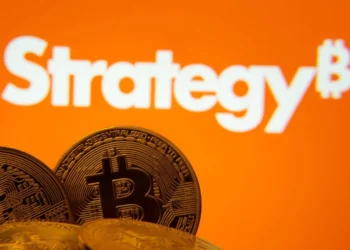The real cryptocurrency has long been dead.
Chainfeeds Guide:
Once, this was something so pure, liberating, and full of hope.
Source:
techflowpost
Author:
hitesh.eth
Opinion:
hitesh.eth: The peer-to-peer (P2P) spirit of the early internet allowed many to experience the charm of free sharing. The seed and node system for movie files was a paradigm of resisting centralization: everyone was both a consumer and a contributor. This idea of “returning power to the users” was the spiritual core of the early crypto community. The birth of bitcoin continued this ideal. Early participants didn’t care about price; they focused on building the network, educating others, promoting adoption, and even distributing bitcoin for free. In 2009–2010, bitcoin had no market value, but it carried the weight of idealistic belief. It wasn’t until exchanges appeared that price gained significance, and greed and fear began to invade. Scams like Mt.Gox, Bitconnect, and OneCoin revealed the cost of ideals being hijacked by capital. The ordinary people who lost 10 bitcoins on Bitconnect were the true early adopters—they believed in bitcoin but didn’t understand its spirit. Once crypto became tied to money, the rules of the game changed: after 2012, the market’s goal was no longer decentralization, but arbitrage under information asymmetry. The crypto market gradually shifted from idealism to speculation. In 2017, over 500 projects raised tens of billions of dollars, but most tokens disappeared within three years. Project teams controlled token distribution, attracting believers by creating scarcity and narratives. Tokens became “strings of promised data with limited supply,” while the real product was an illusion. Economic incentives combined with psychological triggers sparked belief, tribalism, and FOMO. The power of narrative far outweighed evidence—people only needed a story, a symbol, to be driven. Individuals experiencing scarcity and anxiety were precisely targeted; what they bought was not an asset, but hope dressed in the guise of trends and community. Wealth concentration has always existed, but now it spreads faster, and the diffusion of belief overwhelms reflection. The next narrative is always on the way—shiny, credible, like redemption. And the manipulators behind the scenes know well—hope is the easiest drug to sell, and the hardest to quit. Today’s crypto market is a sophisticated extraction game. For newcomers, hope can still be seen; but veterans are weary of the ever-changing narratives and structures. They no longer understand the market, because the market has already changed. Extractors have reduced their audience but increased efficiency: facing a hundred targets is enough for a harvest. New narratives appear frequently, creating excitement and illusion. Some profit and exit, while others become “exit liquidity.” The cycle never ends, because human greed is endless. As mainstream adoption expands, governments will take over this cycle in the name of regulation, bringing capital back into the tax system. Looking back at the original intention, crypto once symbolized freedom and hope—a possibility for decentralization, but now it has become a container for illusion. We followed ideals, yet handed both spirit and wealth to the market. Dreams were shaped into illusions, illusions evolved into extraction, and perhaps, this is the real story of cryptocurrency.
Disclaimer: The content of this article solely reflects the author's opinion and does not represent the platform in any capacity. This article is not intended to serve as a reference for making investment decisions.
You may also like
Cipher Mining Stock Soars 34% Following $5.5B Amazon Cloud Infrastructure Deal

Strategy Files for Euro-Denominated Perpetual Stock IPO to Boost Bitcoin Holdings

BitMine Expands Ethereum Treasury to 3.4 Million Tokens, Valued at $13.7 Billion

Chainlink and Chainalysis Partner to Advance Cross-Chain Compliance Automation

